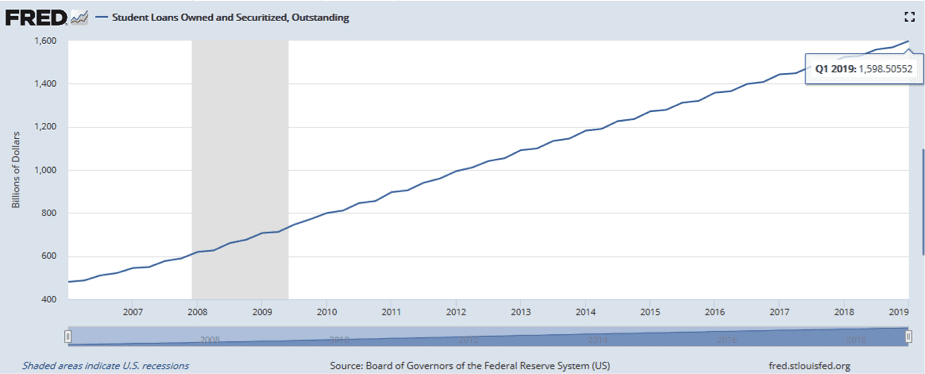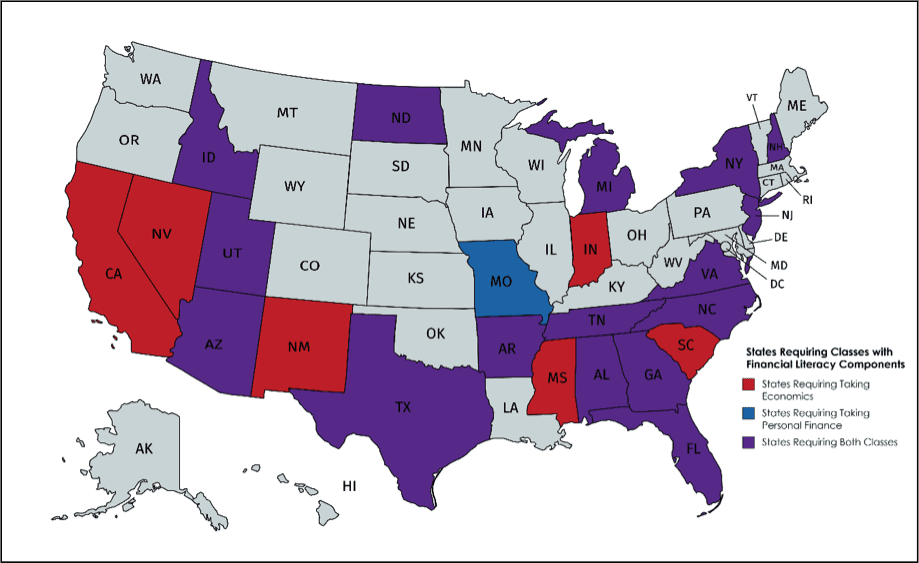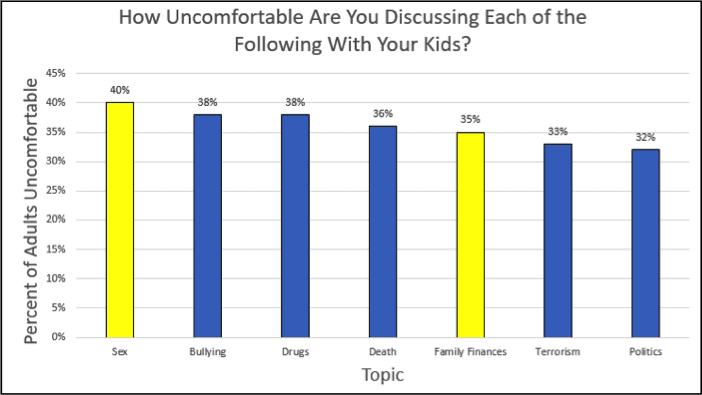
Ben Pults, AYPF Policy Research Intern
Imagine waking up tomorrow morning and discovering that you have received a “small gift” of $30,000. This is essentially what Congress members Bernie Sanders, Ilhan Omar, Pramila Jayapal, and Alexandria Ocasio-Cortez are offering for college students by cancelling all of the about $1.6 trillion student loan debt in America. As promising and popular as this student loan debt elimination plan is, it does little to fix future student loan problems. Confirmed in a New York Times article, as soon as student loan debt is reset to $0, “the national student debt odometer would being rapidly spinning again.”
At the end of the 2018 fiscal year, this student loan debt odometer totaled just under $1.5 trillion, the highest amount ever, with a disproportionate effect on minorities and low-income households according to a recent report by The Institute for College Access and Success (TICAS). Beyond the systemic barriers that many minorities face, college marketing strategies, like those found in for-profit colleges, exacerbate the student loan debt problem by deceiving students of color by “enrolling, not educating.” Additionally, paying for college remains difficult to navigate and many end up confused about their repayment plans, consolidating loans, etc. As such, college is a complex and challenging time fiscally, especially for students of color and low-income households. Fortunately, there is one piece to the puzzle that has the potential to reduce student loan debt and its corresponding inequity: financial literacy.

Student loan debt has increased by over $1 trillion in the last 12 years and is almost at $1.6 trillion.
The State of U.S. Financial Literacy
What exactly is financial literacy? Broadly defined, financial literacy means “possessing the skills and knowledge on financial matters to confidently take effective action that best fulfills an individual’s personal, family, and global community goals,” according to the National Financial Educators Council. However, many young Americans lack basic financial literacy skills, typically obtained through a high school personal finance and/or economics course. By teaching financial literacy at the high school level, students’ awareness rises about their collegiate financial decisions, e.g. utilizing grants/loans, filling out the Free Application for Federal Student Aid (FAFSA), and applying for scholarships, that will result in less student loan debt after graduation. In a 2017 study, only 38% of high school upperclassmen planned on using student loans for college, but in reality, around 60% used student loans. Students that enter the college financial landscape unaware of what awaits them may be more likely to drop out of school due to financial stress or use high-cost methods of borrowing, leading to higher student loan debt. Beyond a lack of financial literacy, students from low-income households face rising college costs after freshman year due to less financial aid.
According to the Council for Economic Education’s 2018 Survey of the States report, neither personal finance nor economics are taught or required for a majority of K-12 and college students. Only 22 states require high school students to take an economics course, and only 17 states require a personal finance class. This is especially concerning given that about 2.2 million 2018 high school graduates were enrolled in college by the Fall of 2018. In a 2019 Money Matters report, newly enrolled students were found to feel more prepared to keep up with classes, stay organized, find resources to succeed, and manage their time properly than knowing how to properly manage their money.

In 2018, according to the CEE, only 22 states require economics and only 17 states require personal finance.
Current Efforts to Improve Financial Literacy
Although many states are currently struggling to teach aspects of financial literacy to their students, there are attempts being made to improve the situation. Due to a lack of firm national financial literacy goals, states have picked up the burden of teaching their students about financial literacy. The National Association of State Boards of Education (NASBE) in 2006 declared that financial literacy is a key to determining the nation’s and children’s future. As such, two major initiatives began documenting state K-12 financial literacy standards: the aforementioned CEE Survey of the States and the Champlain College Center for Financial Literacy Making the Grade report.
Both of these efforts have found varying levels of financial literacy standards for states, yet both initiatives consistently find that under half of the states do an adequate job of teaching financial literacy to students. But states are making efforts to improve. The National Conference of State Legislatures (NCSL) has found that 29 states included financial literacy legislation in the 2018 session, with 17 of them enacting legislation or adopting resolutions. The continued efforts by states to fight for stronger financial literacy standards are proper steps in the right direction, but there are bigger and bolder steps that will result in greater financial literacy for all students.
What Can States Do?
State education officials and policymakers can play a critical role in increasing financial literacy efforts through more specific and personalized approaches to K-12 students. States can provide grants and more funding for students attending state universities, but if incoming college freshman do not know the difference between a grant and a loan, they may also be unlikely to know how to pay off loans if they have them. The following policy recommendations should be considered to improve financial literacy while bearing in mind the need to provide equal educational opportunities for K-12 public school students:
- Require personal finance and economics courses in high school. By requiring public high schools to teach personal finance and economics, youth are exposed to the complex financial world around them. Through this valuable exposure, students learn how to navigate their own finances and understand basic market structures, as well as develop critical thinking on financial issues such as deciding whether or not to take out student loans.
- Adopt CEE’s financial literacy standards. Florida was the first state to adopt the CEE’s K-12 National Standards for Financial Literacy in 2014, requiring students to focus on six personal finance topics: earning income, buying goods and services, using credit, saving, financial investing, and protecting and insuring. By adopting these standards, students begin to form basic financial skills at a young age and become savvy financial citizens by the time they graduate high school.
- Provide financial training for K-12 instructors, counselors, and families. Many teachers, counselors, and parents tend to shy away from financial discussions because it is not their specialty. In fact, parents are almost as reluctant to talk about their family’s finances with their kids as they are about sex. Through specific financial literacy training, teachers, counselors, and parents can become more comfortable in educating children about finances and financial decisions.

According to a 2017 Parents, Kids, and Money Survey, 35% of parents are uncomfortable speaking about their finances with their kids, which is only 5% behind parents reluctant to talk about sex.
The Future of Financing College
Many young Americans make one of the most expensive financial decisions in their life before they turn 21 years old by borrowing for college, most without adequate knowledge. The prospect of financing college remains uncertain for many, especially for low-income students and students of color. Addressing the inequity in the system toward these populations will help ease the burdens of student loan debt and set them up for a better future. Financial literacy may be an individualized approach to the systemic problem of rising college costs, but increasing financial literacy is a good place to start reducing the burden of student loans while improving the future financial well-being of Americans. By implementing policies to improve financial literacy for all students, states can improve the future financial well-being of students not just for student loan decisions, but for acquiring a mortgage and saving for retirement.



